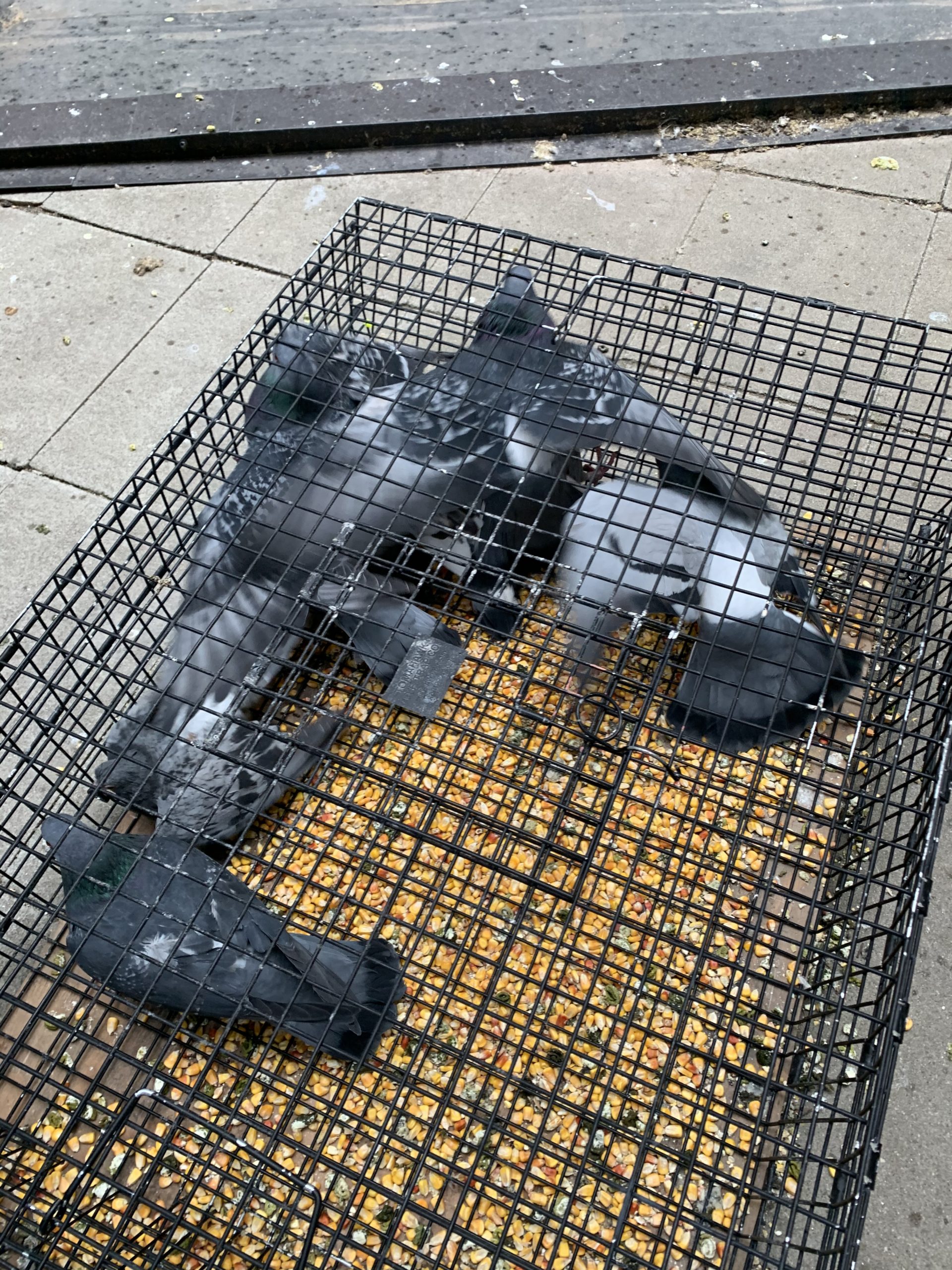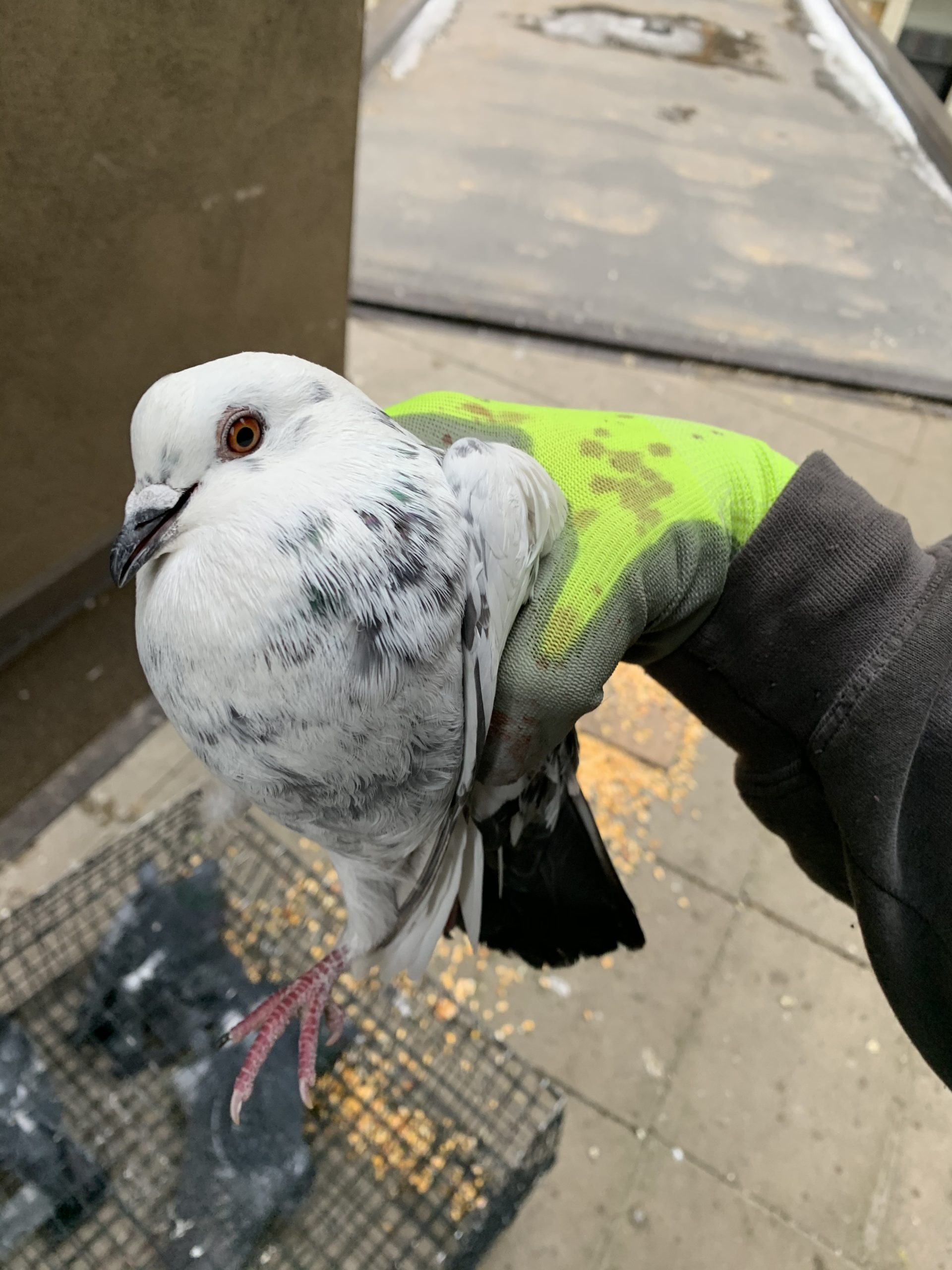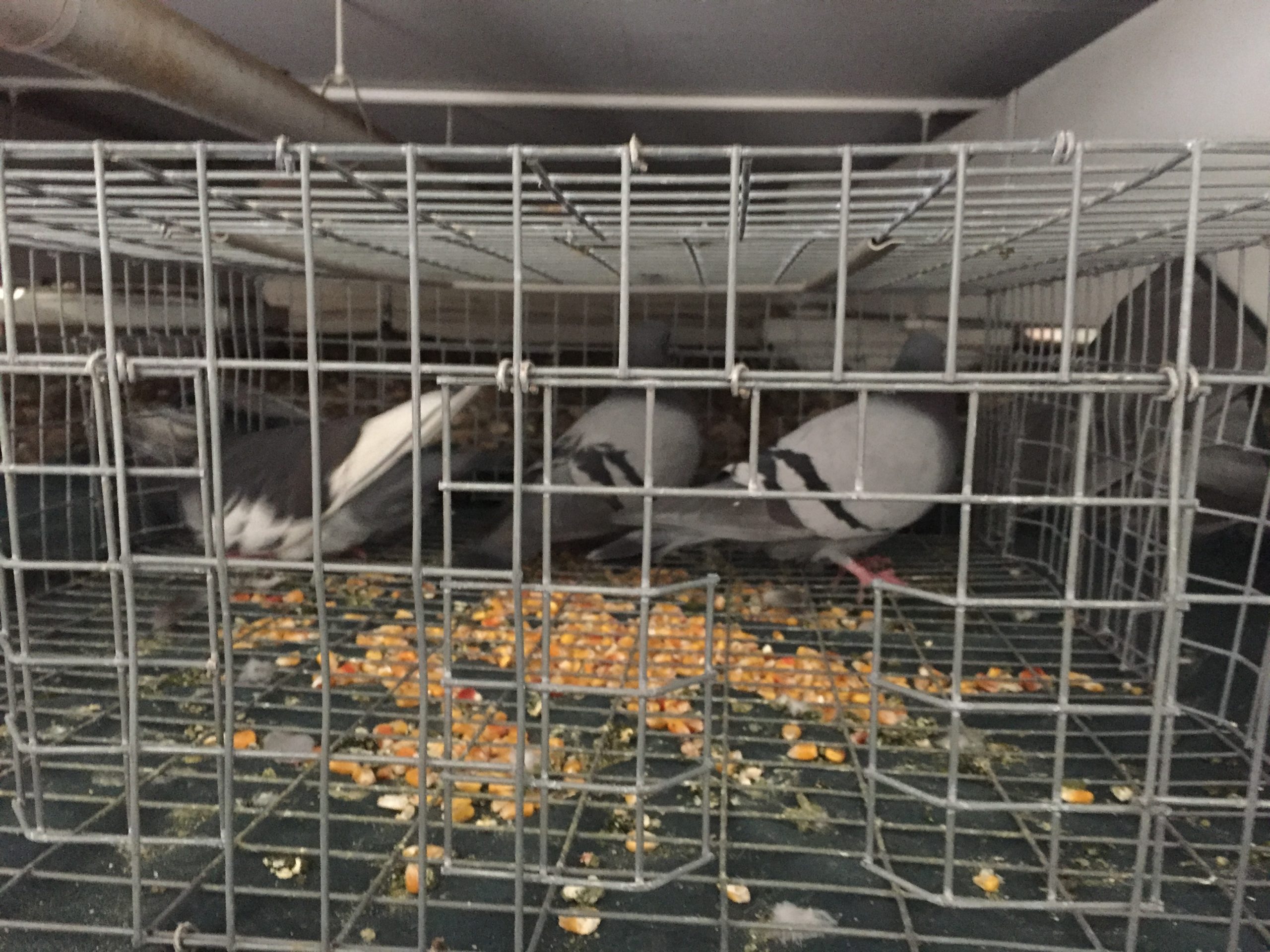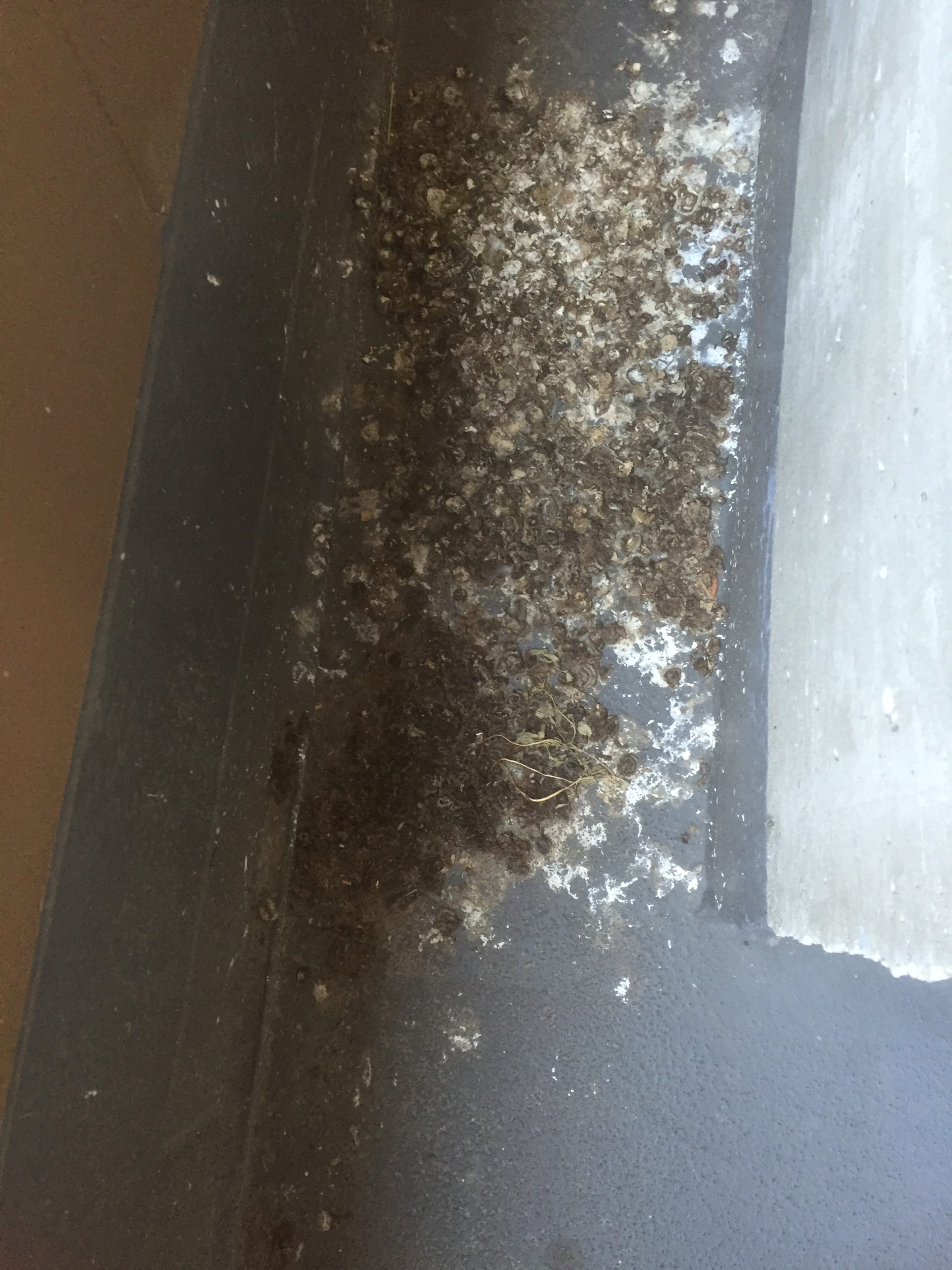Humane Pigeon control solutions for Minnesota. Trapping & removal of nuisance pigeon flocks. Long term exclusion & deterrent options. Damage clean up and pigeon feces abatement. Commercial, Industrial, Residential.
Pigeon Damage
Pigeons are responsible for untold millions of dollars of damage each year in Minneapolis and St Paul area. Uric acid in the droppings are highly corrosive. Debris from roosting flocks can build up. This can back up gutters and drains, causing damage to roofs and other structures. Extensive damage to air conditioning units and other rooftop machinery is common. There are other costs that can be associated from Pigeons taking up residence. This includes slip and fall liability, and projection of an unclean, dirty company image. This can result in a loss of profitability for your company. Besides physical damage, the bacteria and parasites found in pigeon droppings sometimes represent a health risk.




